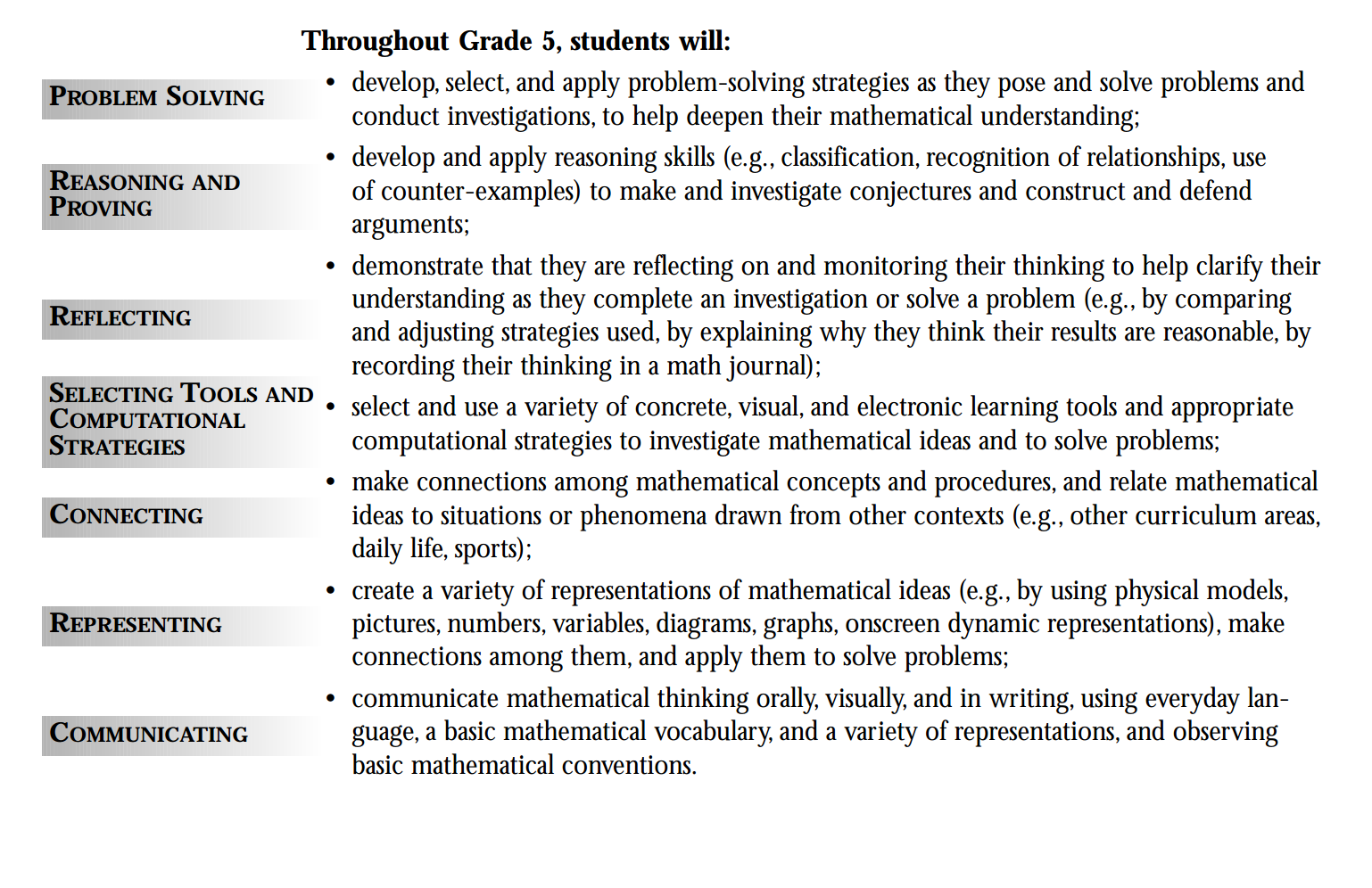Recently, in my Primary/Junior Math AQ course, we examined process expectations in the Ontario primary/junior math curriculum document.
Of particular interest to me was the process expectation around “selecting tools and computational strategies”.
The Ontario math curriculum document was written in 2005, five years before the first iPad was released, and two years before the first iPhone was sold. In the 11 years since the curriculum document was written, we have seen exponential technological advancement.
The digital tools available to children in 2016 are beyond the imaginations of the writers of the current curriculum document.

“Students need to develop the ability to select the appropriate electronic tools.”
How do they develop this ability?
As an adult, how do you develop this ability?
The ability to make that choice depends on1) the ability to understand how you learn, 2) knowing what tools are available and how they work, and 3) having access to those tools.
As educators, is it a priority for us to ensure that students learn to make good choices about what digital tools work best for them?
It isn’t about our comfort level. We can’t wait until we are “comfortable” to make this happen.
And, we can’t teach for a world that no longer exists.
How would you rewrite the 2005 math curriculum document to ensure all students have access to the digital tools they need, and the ability to choose the best digital tools to help them learn?
Further reading:
Toolbelt Theory – Ira David Socol
Featured Image shared by JingleJammer under a CC-BY-SA-2.0 Licence.


Hi Donna,
This is a great discussion to be having at your AQ! I’m in the midst of the Integration of Information and Computer Technology in Instruction AQ and after reading your post I feel a blog post coming on! 🙂 Thanks for inviting this important discussion about the role of educators in determining the kinds of experiences that students will have in school.
In our course, we’ve been talking about Global Competencies, curriculum, assessment and critical thinking about the kinds of tools and technologies we are offering students and choosing as educators. I’m encouraging people to look at their curriculum, not only for what is printed there, but to make inferences. For example, programming with students has been around for 50 years and teachers who have had any experience with Logo will see the content that you shared above and be really happy that they are meeting expectations in helping students:
-see that various types of technology are helpful in doing mathematics
-select the appropriate computational strategies to perform mathematical tasks (patterns, angles, procedures, sub-procedures, variables, random numbers, and algorithms come to mind just off the top of my head – all things I encountered with my Grade 1s in programming with Logo on my 2 – yes only 2 – desktop, yes…desktop! computers….it was so 2005!) LOL
-use the descriptors from above for problem solving, reasoning and proving, selecting computational tools and strategies, connecting, communicating and representing.
I make inferences when I see that curriculum. Problem solving, for example, doesn’t mean word problems to me…it means coding video games, or building bird houses, or cooking recipes, or finger knitting (which I just learned @MakerEdTO this past week).
To me, this is a really open curriculum for the creative educator and @peterskillen and I have been discussing this quite a bit lately. We hear the criticism that the curriculum is ‘too prescribed, too overloaded’….and then conversely, we also hear that educators want the curriculum to be more prescriptive – “let’s mandate computer science from K-12”. We would argue that computer science is already there….we just need to take a different look at it and be prepared when folks are offering up the worksheets on coding (if that hasn’t happened already) to refuse to buy in to strategies that undermine student agency.
Many of us are claiming that we are ready for creativity and innovation for our students. Let’s start with ourselves…like you say! I would argue that while it would be great to revise that 2005 curriculum, it’s not the stumbling block at all. Maybe we could rephrase your question….
How are you, along with your students, innovating the 2005 math curriculum document to ensure all students have access to the digital tools they need, and the ability to choose the best digital tools to help them learn?